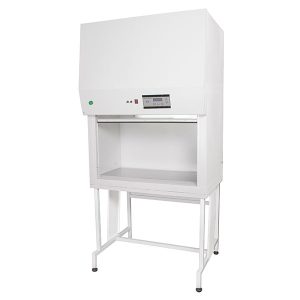Description
What is a chemical hood?
The chemical or chemistry hood, which is the most important pillar of a standard chemistry laboratory, is responsible for protecting the laboratory staff from toxic gases and chemical vapors. The chemical hood provides a safe and pollution-free environment in the laboratory by using a centrifugal suction fan and drawing toxic gases, acids, alkalis and solvents and discharging them outside the laboratory environment or by filtering and returning them again. This allows the personnel to work in a pollution-free environment and not be harmed.
Other uses of the chemical hood include protection of the product against spoilage and decomposition, chemical leakage, fire and unwanted reactions.
Chemistry hoods are divided into ducted and ductless, single-wall and double-wall models.
Technical specifications of Behsan chemical hood
- Skeleton made of 30×30 profile, with electrostatic paint coating
- MDF or metal body
- The floor is made of granite stone or ceramic, anti-acidic solvents, with MDF underlay, with a plexiglass or glass door with a thickness of 6 mm, along with a counterweight.
- It has a water control valve and a gas control valve of the Iranian type, BH Italy design, along with the corresponding nozzle
- It has an anti-acid polymer sink cup measuring 15×30
- It has a lighting system with switches and sockets
- Ability to produce in widths of 80, 100, 120, 150 cm
- The device is produced and supplied in two models with a simple fan or a centrifugal fan.
Types of chemical hoods manufactured by Behsan
We at Behsan company have produced all kinds of chemical hoods in different dimensions and facilities depending on your needs, some of which are listed below for ease of selection:
- Dimensions of width 150, height 230 and depth 70 with centrifugal fan 2800 revolutions
- Width 150, height 210 and depth 70, strong metal fan 2800 rpm
- Width 120, height 230 and depth 70 with centrifugal fan
- Width 120, height 210, depth 70 with a strong metal fan 2800 rpm
- Width 100, height 230 and depth 70 with centrifugal fan
- Width 100, height 210 and depth 70 with a strong metal fan 2800 rpm
- Dimensions of width 80, height 200 and depth 60 with a strong metal fan 2800 rpm
How to use a chemical hood
- Only materials in the work space should be placed under the laboratory hood that are needed to perform the test, because clutter and crowding will disrupt the air flow and increase the risk for the personnel of the laboratory department.
- When working, the front protective glass should be in the lowest position.
- Containers containing chemicals should be at least 15 to 20 cm away from the inlet valve.
- Before starting to use, check that the ventilation fan is healthy. (air flow must be maintained)
- Before and after working with perchloric acid “HClO4” under the hood, the space inside the hood must be washed and dried. Because in a hood that has been treated with perchloric acid, there is a possibility of accumulation of perchlorate salts in the form of very fine powder in the exit exhaust, and perchlorate salts may explode.


